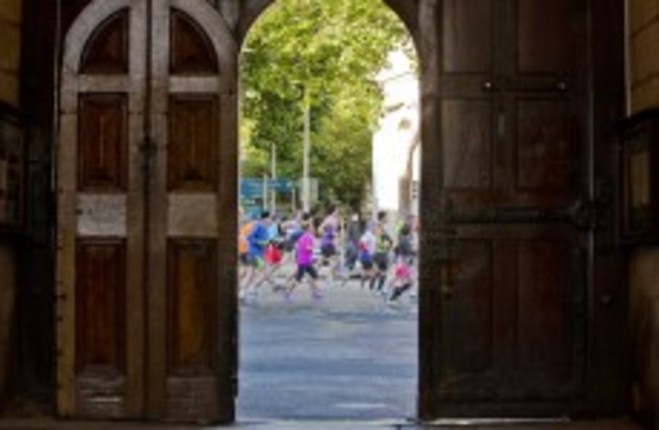WHETHER YOU’RE AN owl or lark, it doesn’t really matter what time of the day you actually get your workout done.
So says one of the country’s top middle-distance running coaches, Pat Hogan of Ennis Track Club in County Clare.
Hogan, who has coached a slew of national champions over the past two decades, believes there must be a sensible approach to training with regards when the best time is to do it.
Specifically talking about running, Hogan says that because most runners are either in school, college or work, the best times are first thing in the morning and straight after work — but he’s not a fan of the lunchtime run.
“In an ideal situation, because most runners are either in school, college, or work there must be an element of ‘fitting it in’ and even if you have to train twice most days – like a lot of actual competitive athletes do, you’re talking morning and evening. Morning, you’re talking any time before work, 6/7/8 or 9am and from 5pm onwards again in the evening is best. That would be ideal,” he says.
“Morning is best to just wake up the system. Let’s pretend you’re doing a workout in the evening as well; you must get out in the morning to get the most out of the evening session. If you want to get a harder workout in the evening you wake up the system with an easy five-mile run in the morning. By doing that you’re getting the body ready for something hard in the evening but you allow six to seven hours between workouts to recover and get some stretching.”
Evening training, despite some evidence suggesting that working out towards the end of the day fatigues the body, must be done in a certain ‘window’, according to Hogan.
“Most of the time you’re with people who are just finishing work or college in the evening around 5-6pm. So ideally, you go home, get some stretching done, do your training but be ready for bed around 10, 10.30pm. I think you can’t leave it too late to get out because then you’re eating late and trying to get stretching in as well so I’d say ’don’t be out after 10 o’clock’.”
As regards squeezing in a run at lunch-time, he’s less than sure of its merits.
“I would think if you have to get it in, you have to get it in,” he says, followed by a long pause. “If you’re trying to go the afternoon and evening it’s a bit squeezed. But if you only have a slot in the afternoon then you have to do it, I suppose. Rushing it will mean you won’t do it right; you haven’t time to warm up or cool down. If you can out only once in the day, then go in the evening to allow you more time.”
On stretching…
“I value flexibility and mobility for the athlete after work in the evening for 10 or 15 minutes. Runners tend to have a lot of gluteal medial issues where that muscle group is weak and tight, so you also need to work on that with stretching to loosen it out. Running is just the same thing repeated so you need to do other things after you’re finished training to ensure you can do a quality workout again that day, or the following day.”
On foam rolling…
“It’s useful but I don’t know how effective it is for some parts of the body. I think if a runner takes 10 or 15 minutes to do foam rolling or static stretching or some type of stretching and mobility then that will all help. I think runners tend to think of running as only running and they forget the other elements, the other things that can make a difference. So foam rolling is helpful along with mobility and stretching. On its own I don’t know if it’s effective enough, but fit it into other things. Then you’re looking at a better all round looser athlete.”
Training aids (stop watches and heart rate monitors, specifically)…
“They have a value, they are useful but you have to be wary of them and I am very careful with them. A lot of my athletes use them, we will cross-reference them against heart rates and. I’d use the Borg scale (Rate of Perceived Exertion, scale 1-10). I will use a heart-rate monitor, but I’d be wary of them. They have a place but they’re not the be-all and end-all. Sometimes I throw all that stuff away and go by feel because that’s what we do in competition. And you have to learn to be able to run by feel. When we go out in cross-country races we don’t know the course and you have to know how you’re actually feeling right now.”
In summary
- Fit your training in around your daily schedule; there is always time
- Training in the morning easy gets your body ready for a harder session in the evening
- Evening training must be done in a certain ‘window’
- Stretching, foam rolling and mobility exercises are vitally important
- Give the lunch-time run a skip, unless absolutely necessary
- Learn to train on ‘feel’ and don’t place too much emphasis on training aids like heart rate monitors.
